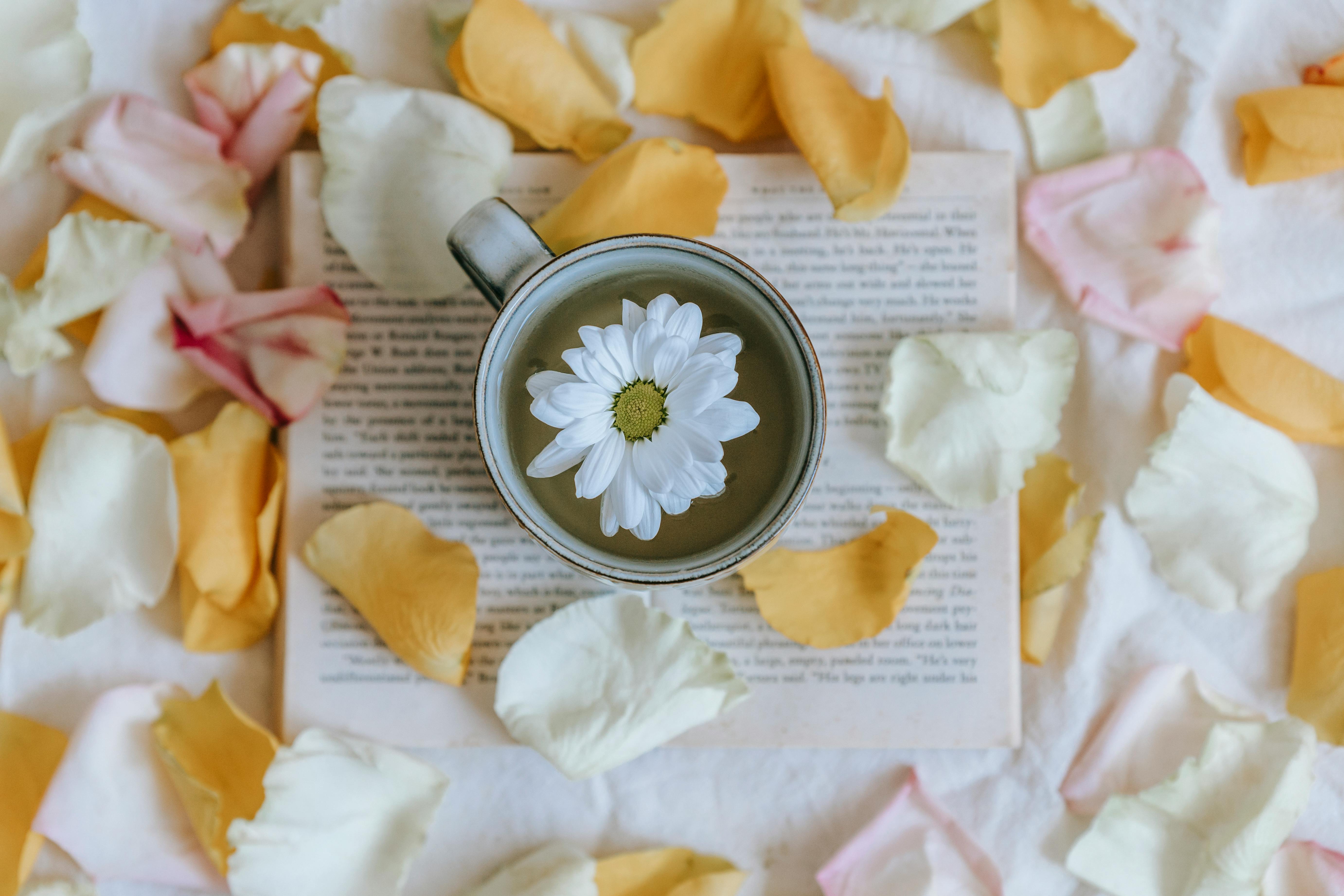Tea is one of the most popular beverages in the world, enjoyed by millions of people every day. But did you know that all tea comes from the same plant? In this article, we’ll explore the origins of tea and how it is made. We’ll also look at the different types of tea and why they all come from the same plant. So grab a cup of your favorite tea and let’s dive in!The plant used to make tea is Camellia sinensis.
Different Types of Tea and Their Origins
Tea is one of the most popular beverages consumed around the world. It is widely enjoyed for its comforting flavor, health benefits, and variety of types. There are several different types of tea available, each with its own unique origin story.
Black tea is one of the most common varieties. It is made from a specific type of tea plant called Camellia sinensis that has been fully oxidized. Black tea originated in China in the 17th century and spread to other countries around the world through the growth of British Empire in the 19th century.
Green tea is another popular type of tea that has been consumed in China for centuries. This type of tea is made from unoxidized leaves, which gives it a distinct taste and aroma compared to black tea. Green tea has many health benefits due to its high levels of antioxidants, which are believed to reduce inflammation and improve heart health.
Oolong tea is another type of Chinese tea that has been enjoyed for centuries. Oolong is partially oxidized, giving it a unique flavor profile between black and green teas. It also contains antioxidants that have been linked to improved digestion and weight loss.
White tea is the least processed variety of Camellia sinensis leaves and it originated in China during the Ming Dynasty (1368-1644). White teas are known for their delicate flavors that range from sweet to grassy depending on where they were grown and how they were processed. White teas are also believed to contain higher levels of antioxidants than other types of teas due to their low level of oxidation.
Finally, herbal teas are made from herbs, flowers, spices, roots or fruits rather than Camellia sinensis leaves. These teas have long been used as medicinal remedies in many cultures around the world for their natural healing properties such as calming effects or digestive aid benefits depending on which herbs are used. Herbal teas can be found in health food stores or online stores as well as specialty shops across the globe.
No matter what type you choose, each variety of tea brings something unique and special to your cup! So grab a cup and explore all the different types available today!
What is Camellia Sinensis?
Camellia sinensis is a species of evergreen shrubs or small trees in the flowering plant family Theaceae, native to East Asia. It is used to make various types of tea, including green tea, black tea, white tea and oolong tea. The leaves and leaf buds of Camellia sinensis are used to produce these teas. Different processing techniques are used to produce different types of teas from the same plant. Green tea is produced by steaming or pan-firing the leaves while black and oolong teas are produced by fermenting the leaves. White teas are produced by drying the leaves and buds without fermenting them.
Camellia sinensis has been cultivated in China for thousands of years for its medicinal benefits as well as for its use in producing teas. It is considered a symbol of longevity and health in many cultures around the world.
The Varieties of Camellia sinensis
CameLLIA sinensis, commonly known as the tea plant, is a species of evergreen shrub or small tree whose leaves and leaf buds are used to produce tea. There are many varieties of Camellia sinensis, which differ in their taste and aroma. The most common varieties of Camellia sinensis used for making tea are China (or Chinese) variety, Assam (or Indian) variety, and Cambodian (or Cambodian) variety.
The China variety is the traditional variety that has been used for centuries to make green tea. It has a sweet floral aroma and a light, delicate flavor. The Assam variety is an Indian variety that produces a more robust flavor with hints of maltiness. The Cambodian variety produces a smooth cup with a hint of floral notes and a slightly nutty aftertaste.
In addition to these three traditional varieties, there are also hybrid varieties developed by cross-breeding different types of Camellia sinensis plants. These hybrids have been developed to produce teas with unique flavors and aromas. Examples include Darjeeling, which has an aromatic sweetness combined with muscatel flavor notes; Oolong, which has a strong roasted character; and White Tea, which is light in flavor but high in antioxidants.
Each type of Camellia sinensis produces teas that have unique characteristics, making it possible to create an endless array of flavors and aromas for the consumer to enjoy. Whether you prefer the delicate taste of green tea or the robustness of oolong tea, there is something for everyone when it comes to the varieties of Camellia sinensis available today!
How Does the Variety of Camellia sinensis Affect the Taste of Tea?
The type of Camellia sinensis used to make tea can have a big impact on the final flavor. Different varieties of this plant produce teas that vary in taste and aroma, making it important to understand the differences between each type. Generally, there are two main varieties of Camellia sinensis: Chinese and Indian. Chinese tea plants are typically smaller and produce teas with a more delicate flavor profile, while Indian tea plants are larger and tend to produce stronger tasting teas. Additionally, different growing conditions can also affect the flavor of tea. For example, teas grown in higher altitude regions tend to have a brighter flavor, while those grown in lower altitude regions may be more mellow.
Additionally, different processing techniques can also influence the taste of tea. For example, green teas are typically steamed or pan-fired after harvest to preserve their delicate flavors, while black teas undergo fermentation which enhances their bolder flavors. Oolong teas fall somewhere in between green and black teas in terms of flavor as they are semi-fermented after harvest. Finally, white teas are made from very young leaves that are minimally processed for a subtle yet sweet flavor profile.
Overall, understanding how the variety of Camellia sinensis affects the taste of tea is key to getting the most out of your cup. Different types of this plant yield different flavors depending on their growing conditions and processing techniques used after harvest. With so many options available, there’s sure to be something for everyone’s tastes!

Where Is Camellia sinensis Grown?
Camellia sinensis, the plant from which all true teas are derived, is native to Asia. The plant is grown in many countries across the globe, including China, India, Nepal, Sri Lanka, Japan, Pakistan, Bangladesh and Vietnam. It can also be found in certain parts of Africa and in parts of South and Central America.
The specific climate and soil conditions vary from region to region, and these conditions affect the flavor of the tea produced. In general, Camellia sinensis thrives in moderately warm temperatures with ample rainfall and acidic soil with a pH around 5-5.5.
In China, for example, tea plants are grown at elevations between 1,500 and 8500 feet above sea level. The northern provinces of Fujian and Zhejiang are particularly well-known for producing high-quality teas such as oolongs and green teas. In India, tea is grown mostly in Darjeeling (in West Bengal) and Assam (in Northeastern India). Assam teas tend to have a strong flavor due to their higher levels of caffeine.
In Japan, tea gardens are primarily located in Shizuoka Prefecture on the island of Honshu. Here too the elevation plays an important role in the flavor of the tea produced; lower elevation gardens produce a more delicate flavor while higher altitude gardens yield a more intense flavor.
No matter where it’s grown or how it’s processed for consumption; Camellia sinensis will always remain one of the world’s most beloved beverages!
Cultivation Techniques
The cultivation techniques used to grow tea leaves have a significant impact on the taste of the tea. Tea plants that are grown in different climates and soil conditions produce leaves with different flavors. For example, tea plants grown in mountainous regions tend to produce leaves with more pronounced flavors. On the other hand, tea plants grown in lowland areas have more delicate flavors. In addition, different cultivars of tea plants can produce leaves with different tastes. Thus, certain cultivars are better suited for certain types of tea due to their flavor profiles.
Preparation Techniques
The preparation techniques used to brew tea also play a role in the flavor of the beverage. For example, loose-leaf teas tend to have a more intense flavor than pre-packaged teabags because they allow for more interaction between the hot water and the leaves themselves. Additionally, steeping times can also affect the taste of tea as over-steeping can cause bitterness while under-steeping can leave it tasting weak and watered down. The temperature of the water used for brewing can also influence the flavor of tea; generally, hotter water will produce a stronger tasting cup while cooler water yields a milder beverage.
Are There Any Other Plants Used to Make Tea?
Yes, there are several other plants that are used to make tea. For instance, yerba mate is a popular tea made from the leaves of the South American holly tree. Other herbal teas, such as chamomile, mint, and rooibos, are made from the leaves and flowers of various plants. Even some fruits and vegetables can be used to make tea; for example, strawberry or raspberry leaves can be brewed into an herbal tea. In addition, some spices such as ginger root and cinnamon sticks can also be used to make a flavorful beverage. Finally, many people enjoy making their own unique blends by combining different herbs or spices to create a unique flavor.
Ultimately, there are many different plants that can be used to make tea. Whether you prefer herbal teas or fruity infusions, there is something out there for everyone!

Conclusion
It is clear that not all tea comes from the same plant. While the Camellia sinensis plant is the source of most teas, there are other plants such as rooibos and honeybush that are used to produce herbal teas. Furthermore, there are numerous varieties of Camellia sinensis as well as different processing techniques which create a wide array of flavors and styles. Ultimately, it is this variety which makes tea so interesting and enjoyable.
In conclusion, while all tea may come from some variation of the Camellia sinensis plant, there is great diversity in terms of type, flavor, and style which make up the large world of tea.
